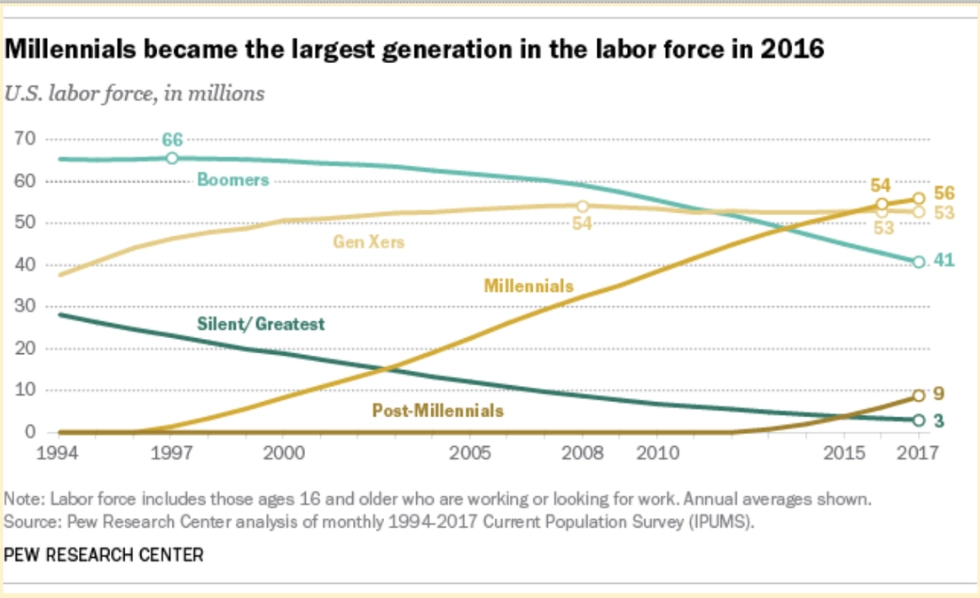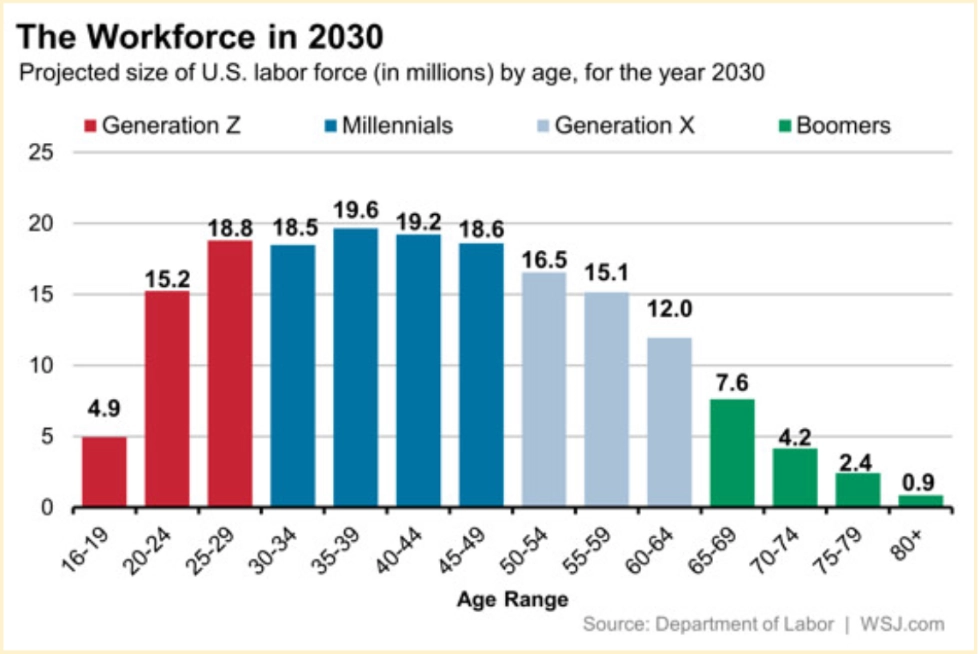An unexpected positive outcome in managing millennials
Industry: Digital marketing agency Country: USA Size: 50 employees Issue/challenge: Managing young employees became a challenge for a head of marketing. Their low productivity and disengagement significantly decreased the department's performance. Solution: WorkTime employee monitoring and productivity tracking software. Result: 46% increase in the marketing department’s productivity!Kathy, a marketing manager, faced a challenge in her career. She had to manage an unproductive but a highly valued millennial employee.
Gamification and other strategies did not work
Kathy experimented with practices and strategies. Most HRs suggested gamification to boost employees' engagement in the work process. Yet, no gamification at work brought Karl back to work as it should have. It helped only for a brief time. Neither conversations nor flexible schedules worked either.Conversations, flexible schedule, gamification - nothing worked.
Skepticism about employee monitoring: it won’t work!
Implementing employee monitoring software has never been an option for this team. A lot of worries and skepticism were related to employee monitoring:- Micromanagement was a no-no practice. The company’s authority discouraged excessive control but promoted a transparent and loyal environment. That’s why recording screenshots and keystrokes would not work.
- Invasive monitoring could make the best employees leave the company. It was extremely important for the team members to be trusted.
- The company did not want to have problems with legal risks. Tracking and storing private information may cause legal issues.
There was skepticism, but WorkTime is non-invasive!So the manager decided to give it a try, with a very unexpected result.
Kathy takes a risk and implements WorkTime
Not only did she get positive feedback from Karl, but also the entire department became very productive and disciplined, with only occasional small situations of productivity drop. The way Kathy implemented WorkTime was by granting each employee access to their own productivity stats. When Karl looked into his data, he was at first surprised by the reports. Karl discovered that he was distracted all the time. Learning productivity stats was extremely useful for understanding his work style better. These were his main discoveries: Reports showed that his productivity was much lower compared to his colleagues. He worked the same number of hours but completed fewer tasks during the week. And this rate was getting worse during the month. Comparing his in-office and remote productivity, Karl found out that his active time was lower when he worked from home. Other departments were recognized on the leaderboards, but the marketing department, unfortunately, took the last place. Karl was disappointed because he knew that they had the potential to be the best. A thorough analysis helped him improve his productivity and performance, and he even got promoted very quickly! This is what Karl told Kathy: “When we were given such a program, I was very angry. But then, I started looking at the numbers and got a competitive spirit, and I actually started doing more, lol Btw, after a couple of months, I was promoted. When such a program is implemented, it's not always about the desire for control but also about encouragement.”An unexpected outcome: the entire department, including Karl, got a competitive spirit, and I actually started doing more!
Breaking the productivity record
WorkTime was highly effective for an instant increase in the whole department’s performance. Their productivity has risen from 41% to 87%. Yet, Kar’s results were the most surprising for her boss. It was about some sort of competitive spirit for Karl! And he didn’t stop making progress. Kathy Maxwell learned how to deal with younger people: this was not the game they needed, but some sort of challenge and competition. Anyway, there is a happy ending to this story. Well done, WorkTime!Productivity has risen by 46%! And this was not the game they needed, but some sort of challenge and competition.
WorkTime is a perfect match for millennials engagement
Millennials are changing the workplace for the better. They teach their employers to put their employees first. Very often, the real problem is not in the “millennials' irresponsibility,” but in rigid management and a lack of willingness to change and improve the work environment. Without a doubt, green non-invasive employee monitoring harmonizes with millennials' mindset. Kathy and Karl’s story proves that WorkTime employee monitoring is about boosting the team’s productivity in a safe, efficient, and transparent manner. Build a positive, effective, and millennial-friendly workplace with WorkTime. Start a free trial right now!Bonus info!
Millennial employees: a challenge or an opportunity?
Kathy thereby met the biggest challenge in her career. Karl was unproductive but a highly valued employee. Some of his genius ideas and creative strategies brought big checks to the company. Hence, Karl is not the exception. So, the company may face this problem multiple times, until the authority sets up the best-working strategy to manage millennial employees. For this reason, the manager started the search for the most effective way to deal with millennials' productivity.Millennials are often less responsible and goal-oriented, but very gifted and skilled workwise.According to the Pew Research Center, millennials became the largest age group in the US labor force in 2016.

Source: Pew Research Center
What’s more, millennials will be in the top spots (44% of the US labor force) until 2030. And then, Generation Z (zoomers) will replace them in the labor market.
Source: The Wall Street Journal
Managing millennials is tough: myth or reality?
HRs around the world are complaining: “Managing millennial teams is an absolute nightmare! Get ready for problems, frequent layoffs, and poor performance.” But is it as bad as it seems to be? Managing millennials is a story about challenges but numerous opportunities at the same time.Challenges: what do millennials value above all?
- Millennials need more support and understanding. Loyalty and transparency in the workplace are a must.
- They can change work frequently. If baby boomers mostly need jobs for survival and security reasons, millennials want to feel the fulfillment and value of their work.
- Millennial employees value work-life balance and flexibility more than achievements. That’s why they can be perceived as less-motivated workers.
- It’s believed that millennials are bad at time management. And it’s partially true.
- WorkTime will be a great solution for millennials to boost their time-management skills. Productivity tracking helps to analyze the work approach and find ways to work better.
- It’s important for millennials to feel independent. That’s why micromanagement won’t work. Instead, you can allow them to control their work time as much as possible.









